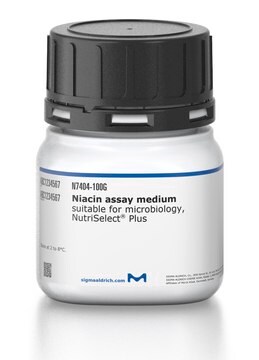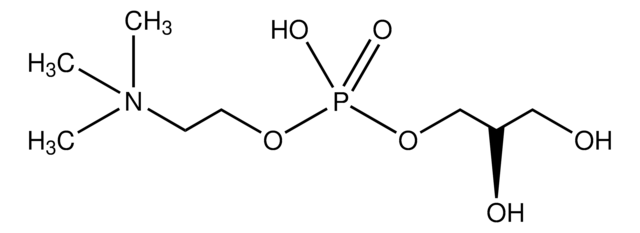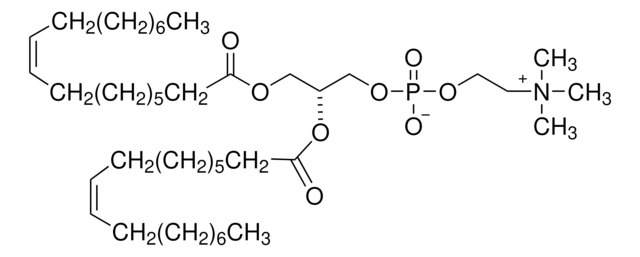P1348
1,2-Dipalmitoyl-sn-glycero-3-phosphoethanolamine
≥97%
Sinónimos:
1,2-Dihexadecanoyl-sn-glycero-3-phosphoethanolamine, 3-sn-Phosphatidylethanolamine, 1,2-dipalmitoyl, L-α-Phosphatidylethanolamine, dipalmitoyl, L-β,γ-Dipalmitoyl-α-cephalin, DPPE, Dipalmitoyl phosphatidylethanolamine, Hexadecanoic acid (1R)-1-[[[(2-aminoethoxy)hydroxyphosphinyl]oxy]methyl]-1,2-ethanediyl ester, PE(16:0/16:0)
About This Item
Productos recomendados
Quality Level
assay
≥97%
form
powder
functional group
amine
ester
lipid type
phosphoglycerides
shipped in
ambient
storage temp.
−20°C
SMILES string
CCCCCCCCCCCCCCCC(=O)OC[C@H](COP(O)(=O)OCCN)OC(=O)CCCCCCCCCCCCCCC
InChI
1S/C37H74NO8P/c1-3-5-7-9-11-13-15-17-19-21-23-25-27-29-36(39)43-33-35(34-45-47(41,42)44-32-31-38)46-37(40)30-28-26-24-22-20-18-16-14-12-10-8-6-4-2/h35H,3-34,38H2,1-2H3,(H,41,42)/t35-/m1/s1
InChI key
SLKDGVPOSSLUAI-PGUFJCEWSA-N
¿Está buscando productos similares? Visita Guía de comparación de productos
Categorías relacionadas
Application
Biochem/physiol Actions
Storage Class
11 - Combustible Solids
wgk_germany
WGK 3
flash_point_f
Not applicable
flash_point_c
Not applicable
ppe
Eyeshields, Gloves, type N95 (US)
Elija entre una de las versiones más recientes:
¿Ya tiene este producto?
Encuentre la documentación para los productos que ha comprado recientemente en la Biblioteca de documentos.
Los clientes también vieron
Nuestro equipo de científicos tiene experiencia en todas las áreas de investigación: Ciencias de la vida, Ciencia de los materiales, Síntesis química, Cromatografía, Analítica y muchas otras.
Póngase en contacto con el Servicio técnico









